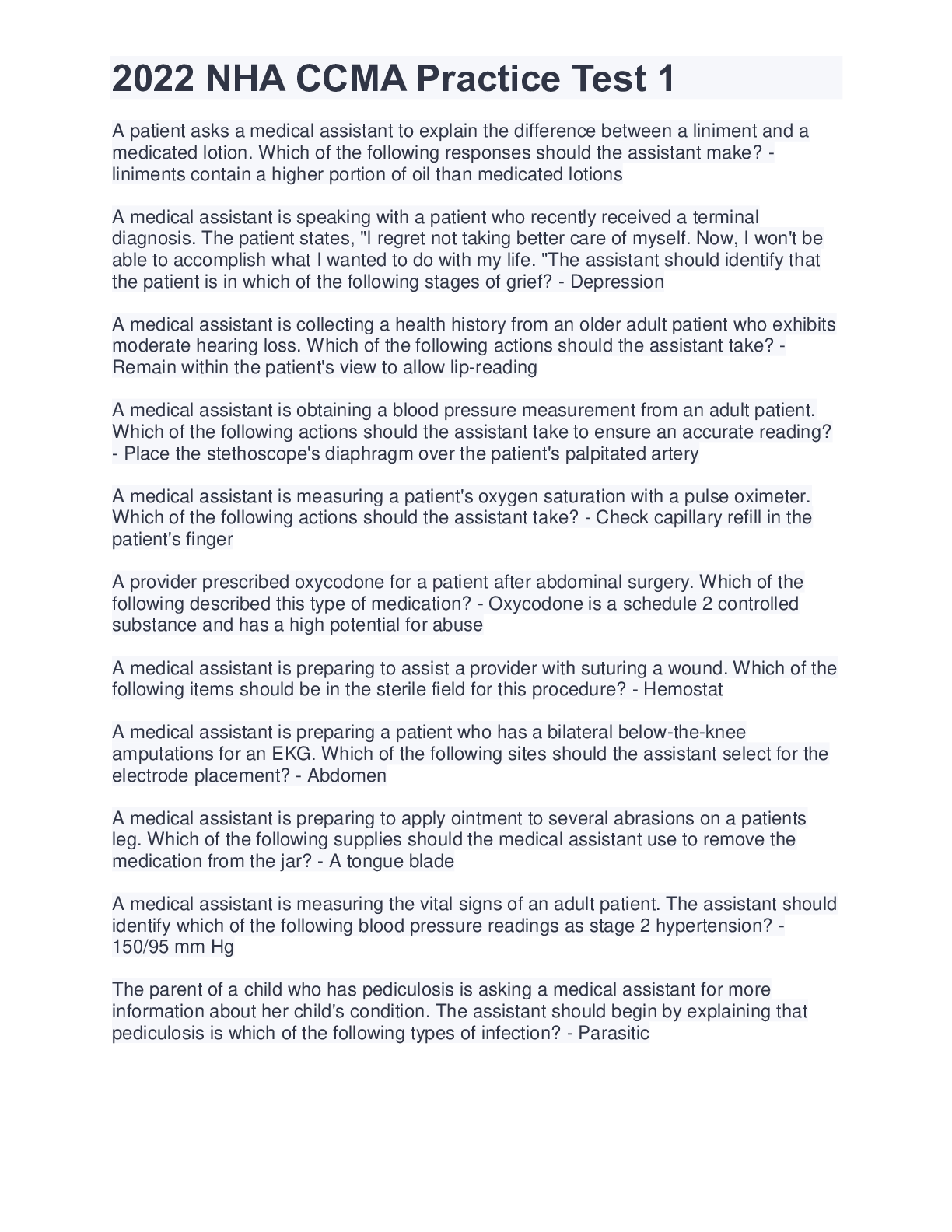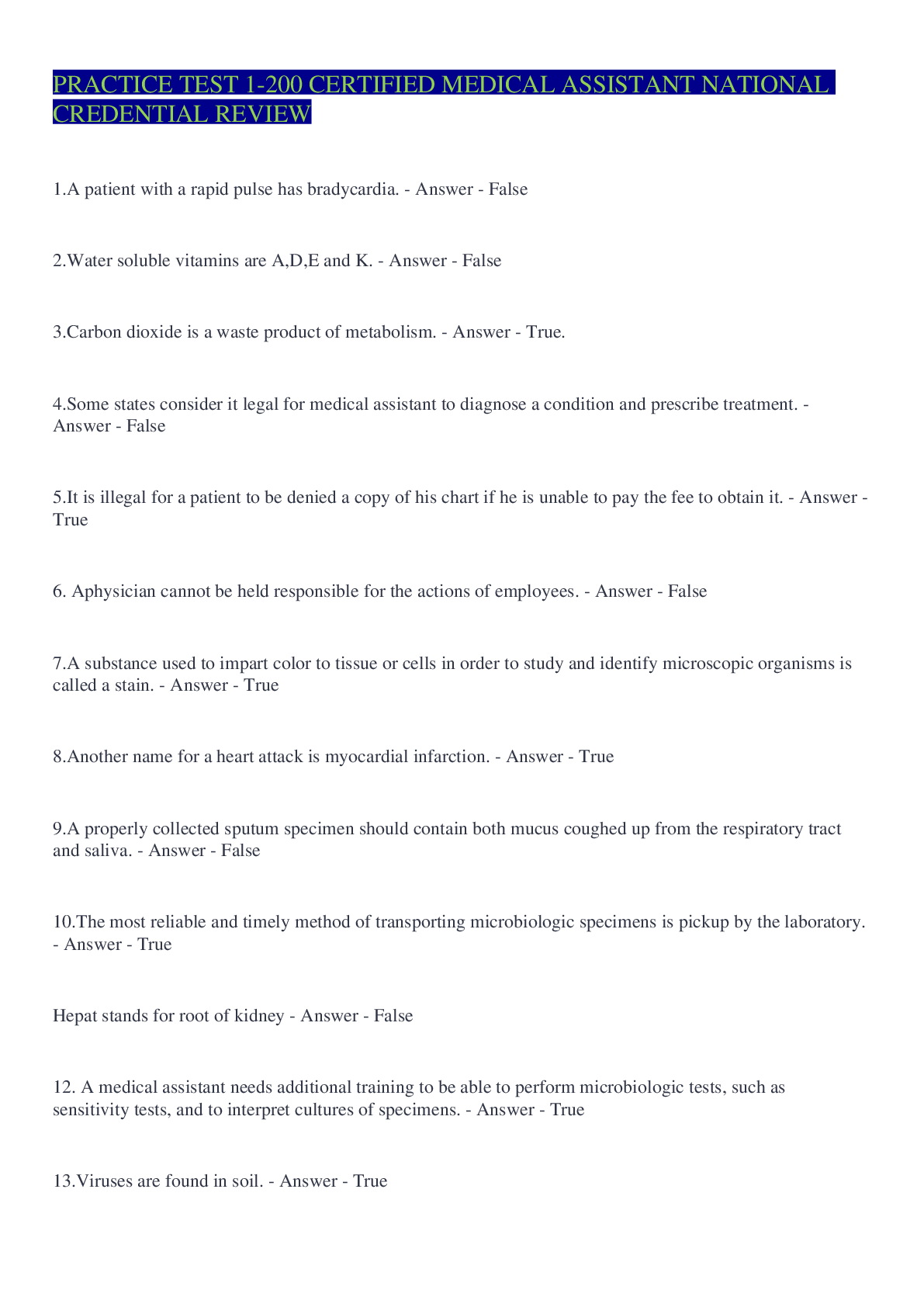Medicine > QUESTIONS & ANSWERS > RD Exam Practice Test 1 (CDR) Questions and ANSWERS (All)
RD Exam Practice Test 1 (CDR) Questions and ANSWERS
Document Content and Description Below
Which of the following techniques offers the least constructive information to someone being disciplined? Providing advice Focusing on behavior Providing alternatives Focusing on observations ... - ANSWER The correct answer is A. The purpose of disciplining is for a manager to provide constructive information to help the subordinate become aware of how his or her actions affect the organization's system. The goal is to provide maximum information with minimum threat. Providing advice is not constructive. Feedback should focus on ideas and information, not advice. Which of the following is NOT a component of meta-analysis? Inclusion criteria are clearly defined Peer-reviewed data are preferred Studies must have a similar design Data are presented in a narrative manner - ANSWER The correct answer is D. Meta-analysis uses studies with similar design, defines inclusion criteria, and usually uses peer-reviewed articles. There is no criterion or requirement that data have to be presented in a narrative manner. What elements comprise the marketing mix? Product, price, promotion, and place Price, product, popularity, and process Product, promotion, position, and popularity Product, place, position, and process - ANSWER The correct answer is A. Marketing mix is a combination of product, price, place and promotion to achieve an organization's objectives and to satisfy the target market. A product can be a good, a service, or an idea. Price is the amount of money charged for a product. Promotion is used to facilitate exchanges by informing prospective customers about a business and its products. Place refers to the location, the place where the product is offered. The terms "popularity," "process," and "position" have no relevance in marketing mix. Which agency approves the use of food additives in breakfast cereal? US Department of Agriculture (USDA) Environmental Protection Agency (EPA) Food and Drug Administration (FDA) Federal Trade Commission (FTC) - ANSWER The correct answer is C. The FDA regulates use of food additives—including coloring agents considered safe for human consumption and additives that are considered safe for human consumption or generally recognized as safe (GRAS) by the scientific community. Any food that contains a food additive that is not deemed safe is considered an adulterated food by FDA standards. Which of the following characteristics is key to an efficient and effective system? Continuous response and adaptation to the system Flow of resources Interdependency of parts Achievement of subunit objectives - ANSWER The correct answer is C. A system is a collection of interrelated parts or subsystems unified by design to obtain one or more objectives. Interdependency is the reciprocal relationship of the parts of a system; each part mutually affects the performance of the others. Interdependency emphasizes the importance of viewing the organization as a whole rather than as isolated parts. The other responses (ie, continuous response and adaptation to a system, flow of resources through a system, and achievement of subunit objectives) all are isolated parts of a system. One advantage of using a crossover design over a parallel design is a shorter study duration. a smaller sample size. a reduction in variability. a washout period is not needed. - ANSWER The correct answer is C. Crossover design includes a washout period and does not have to be a shorter study duration, and sample size does not have to be small. The design uses the same subjects who serve as the control, hence a reduction in variability. Customer and employee satisfaction are both functions of management. linking processes. environmental factors. outputs of the foodservice system. - ANSWER The correct answer is D. The outputs are the goods and services that result from transforming the inputs of the system and express how objectives are achieved. Customer and employee satisfaction and financial accountability are desired outcomes in a foodservice system. Which of the following must be true for a food to be labeled "low fat"? Contains less than 0.5 g fat per serving Contains less than 3 g fat per serving Contains 25% less fat than the full-fat food Contains 1/3 fewer calories or 50% less fat than the full-fat food - ANSWER The correct answer is B. Following food labeling laws, to be identified as low in fat, a serving of food must contain less than 3 g fat. Diagnosis is the second step in the Academy's Nutrition Care Process and Model. Part of the Diagnosis step is to document PES. PES stands for _____. Problem, Etiology, Signs and Symptoms Plan, Education, Significant Results Proposal, Efficacy, Strategies Policy, Establish, Skills - ANSWER The correct answer is A. PES stands for Problem, Etiology, Signs and Symptoms. Documentation of PES incorporates information gained during the Nutrition Assessment step of the Nutrition Care Process to identify the problem and the evidence presented by what the patient is experiencing Dietetic students finishing supervised practice should be able to utilize food and nutrition management systems, client educational materials, and prescribe TPN formulas. create organizational mission statements. generate appropriate statistical analyses. work with electronic health records. - ANSWER The correct answer is D. Entry-level practitioners need to have a general awareness of entry-level informatics skills, which include electronic health records, food and nutrition management systems, and educational print materials. Daily Values are nutrient standards derived from the Daily Reference Values and the Reference Daily Intakes. Recommended Dietary Intakes. Reference Dietary Allowances. Recommended Daily Allowances. - ANSWER The correct answer is A. Daily Values are nutrient standards derived from the Daily Reference Values (DRV) and Reference Daily Intakes (RDI). DRVs are provided for total fat, saturated fat, cholesterol, total carbohydrate, dietary fiber, sodium, potassium, and protein. RDIs are provided for vitamins; minerals; and protein for children younger than 4 years of age and for pregnant and lactating women. In order to limit consumer confusion, however, the label includes a single term (ie, Daily Value [DV]), to designate both the DRVs [Show More]
Last updated: 1 year ago
Preview 1 out of 40 pages
Instant download
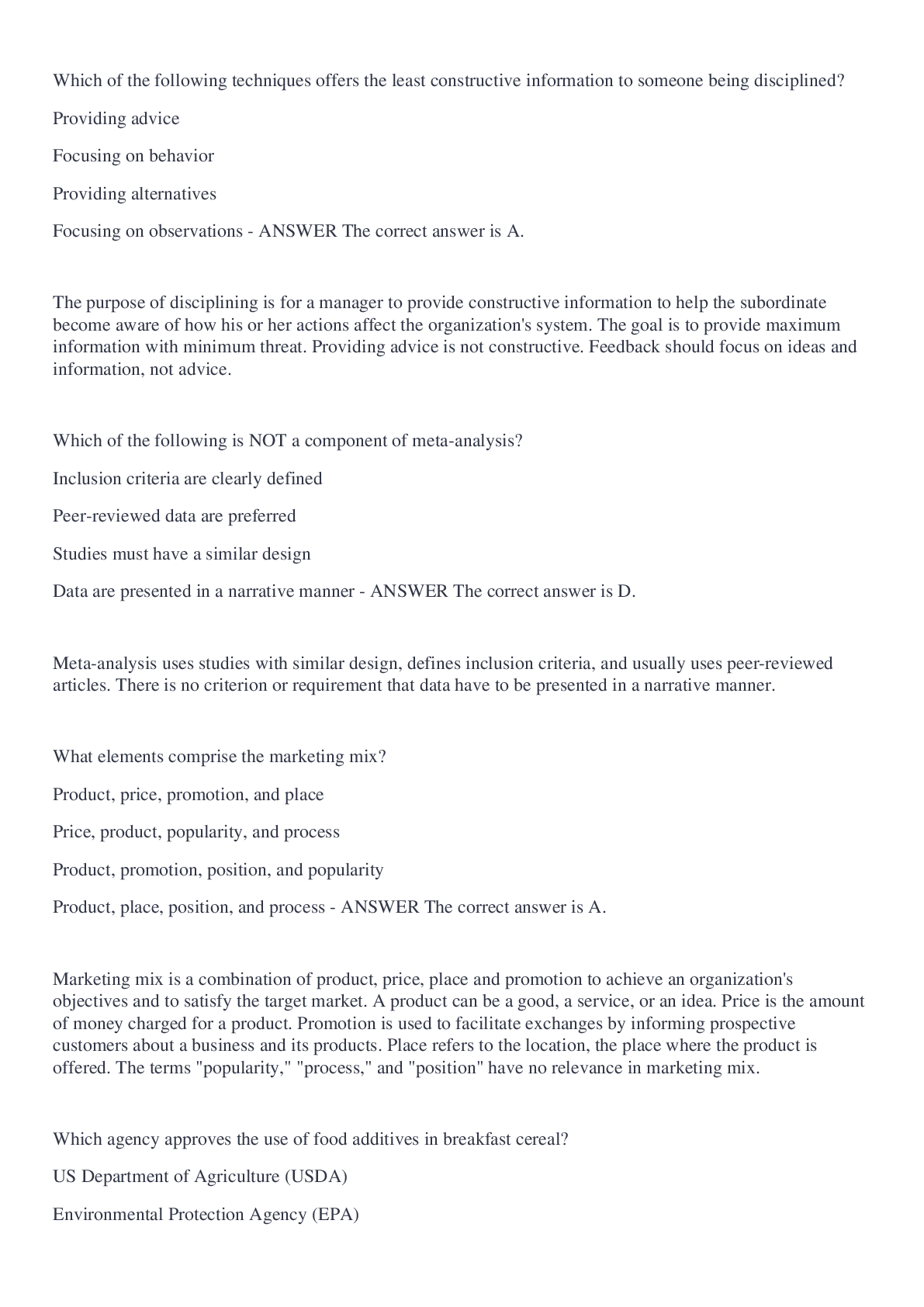
Buy this document to get the full access instantly
Instant Download Access after purchase
Add to cartInstant download
Reviews( 0 )
Document information
Connected school, study & course
About the document
Uploaded On
Jul 28, 2022
Number of pages
40
Written in
Additional information
This document has been written for:
Uploaded
Jul 28, 2022
Downloads
0
Views
62





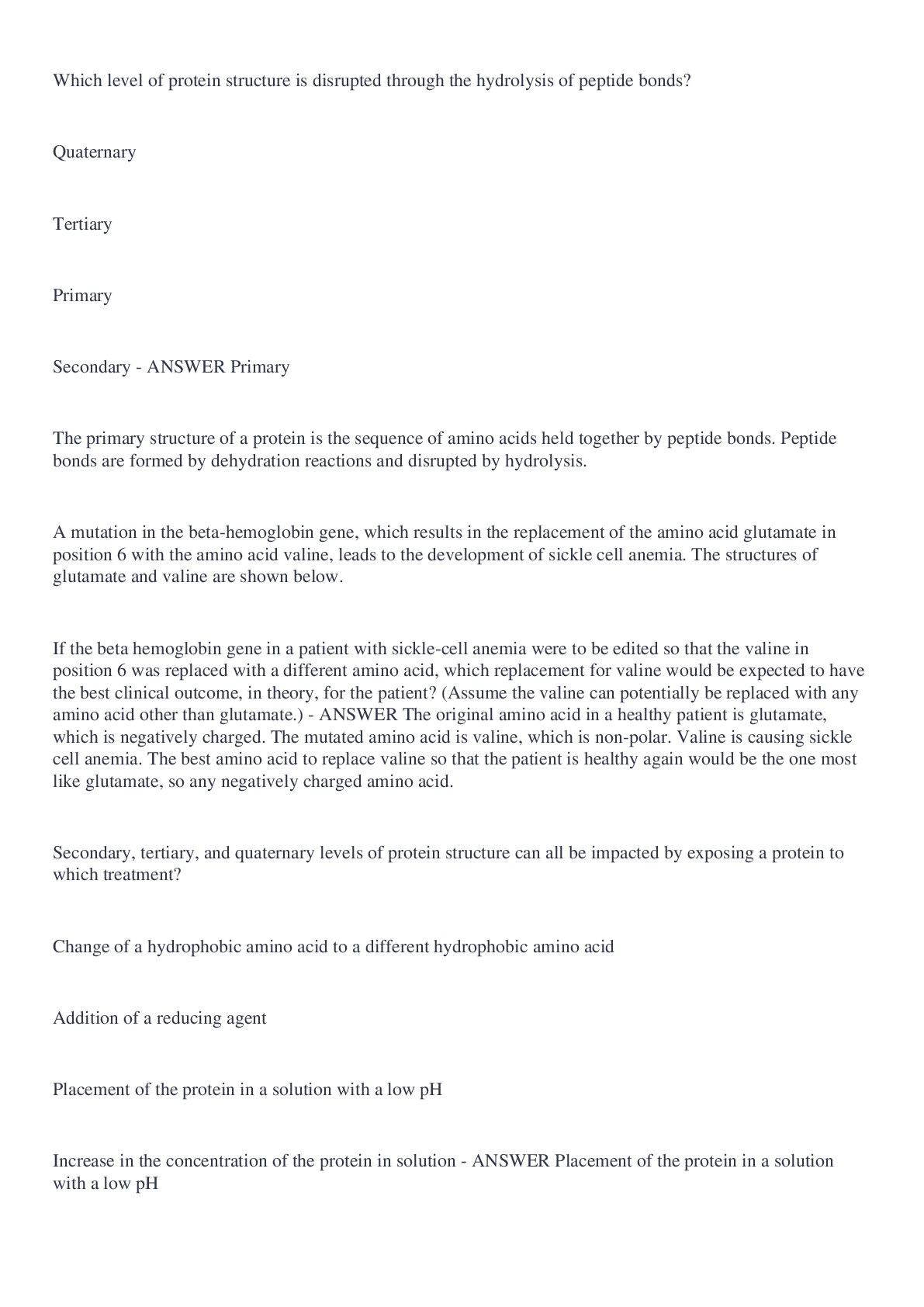


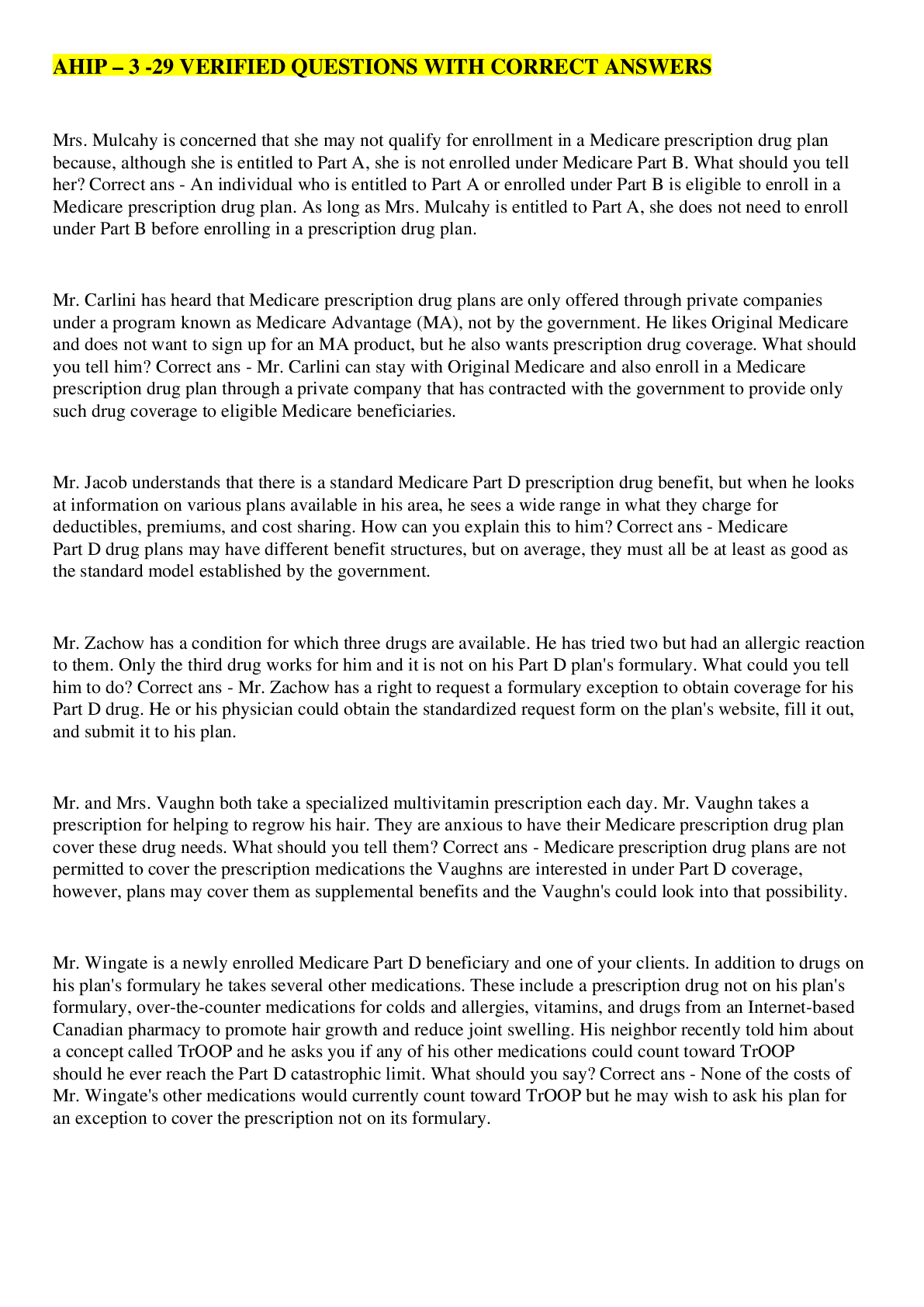


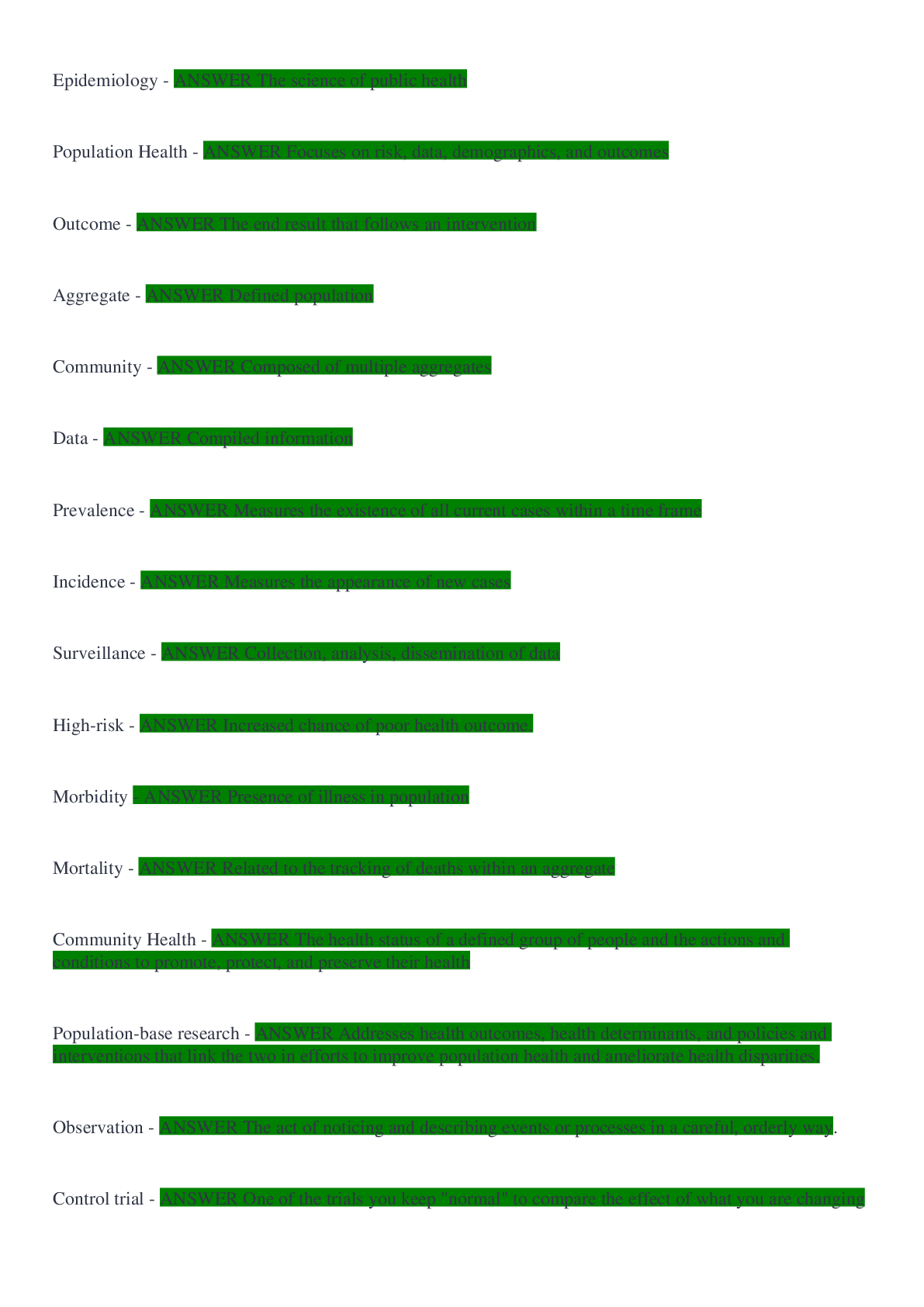

 – for Registered Nurses.png)

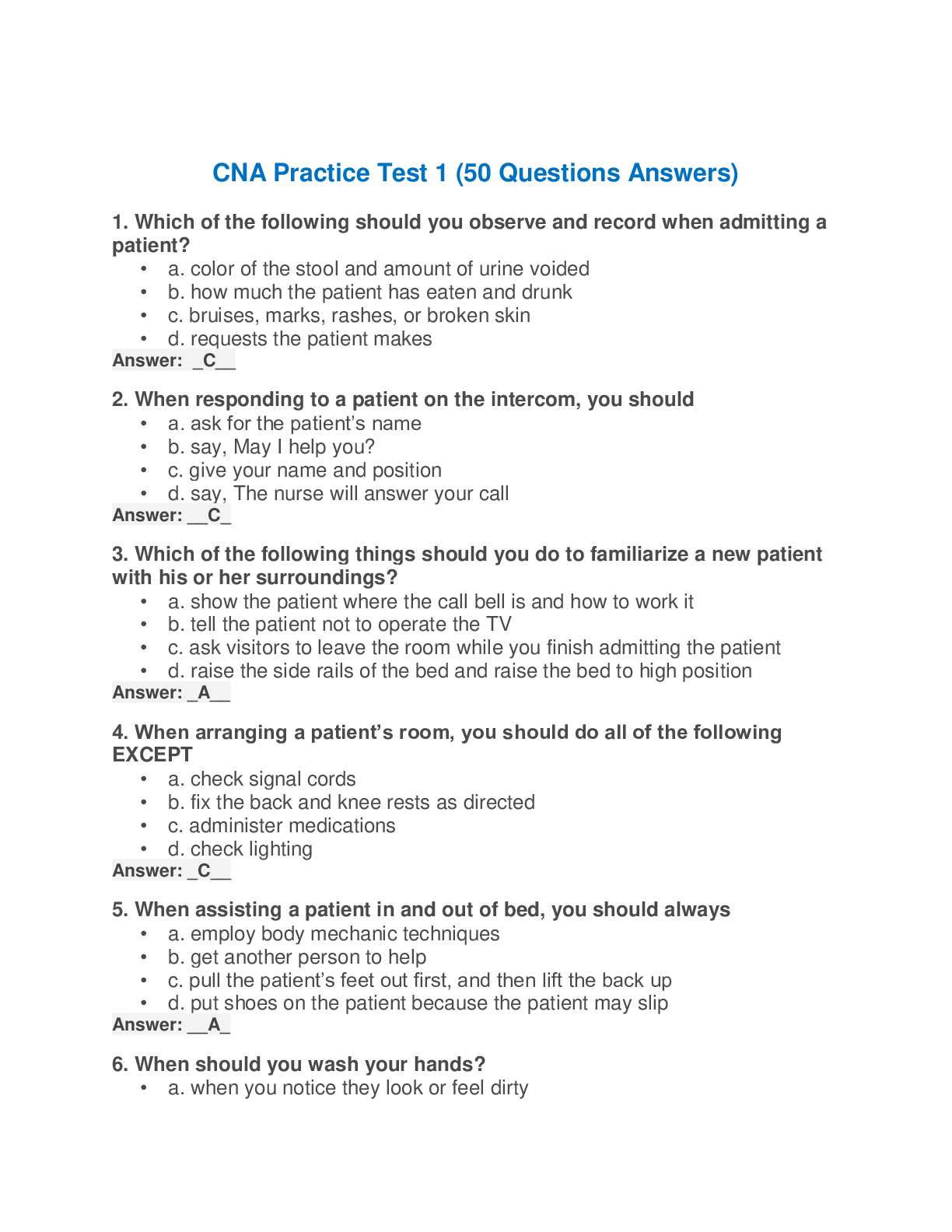
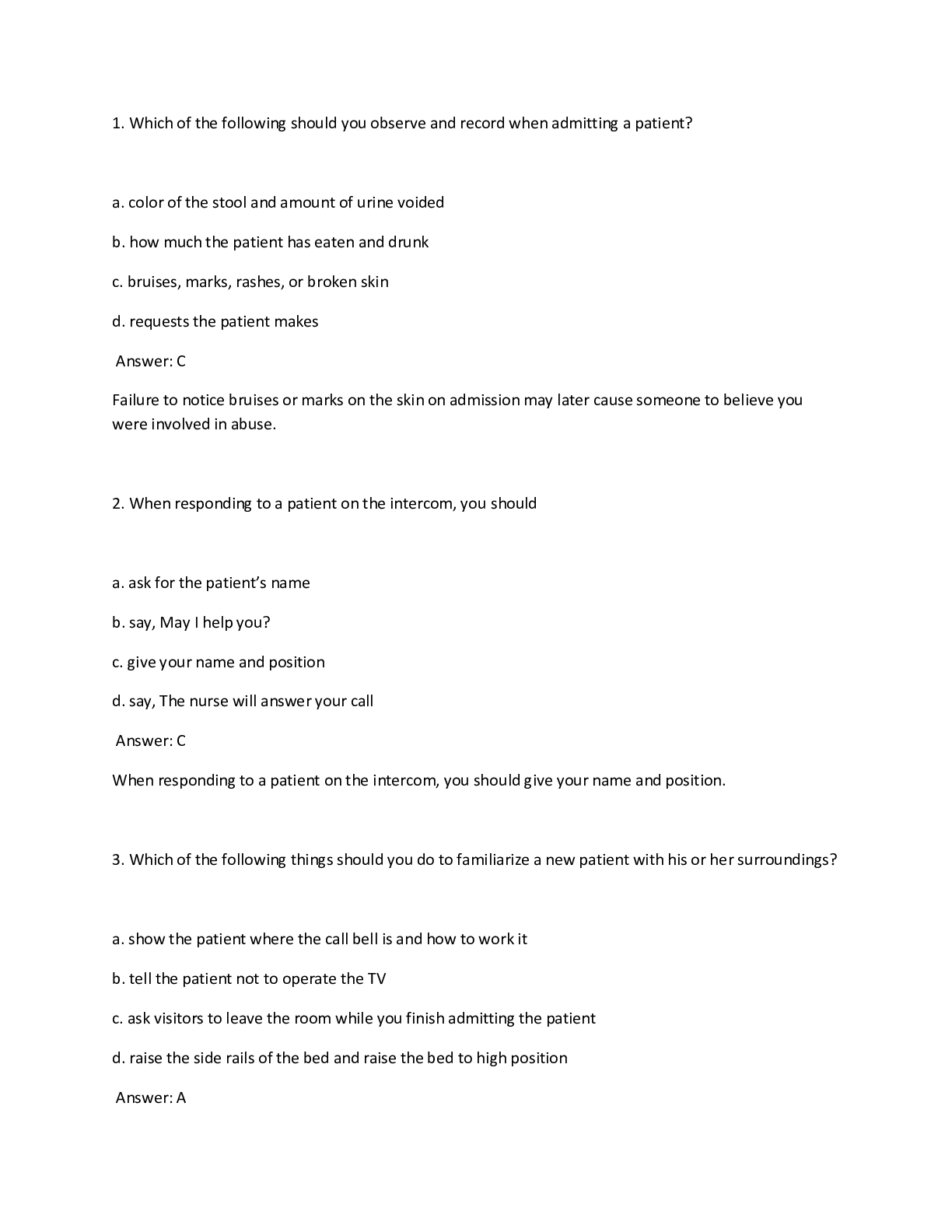
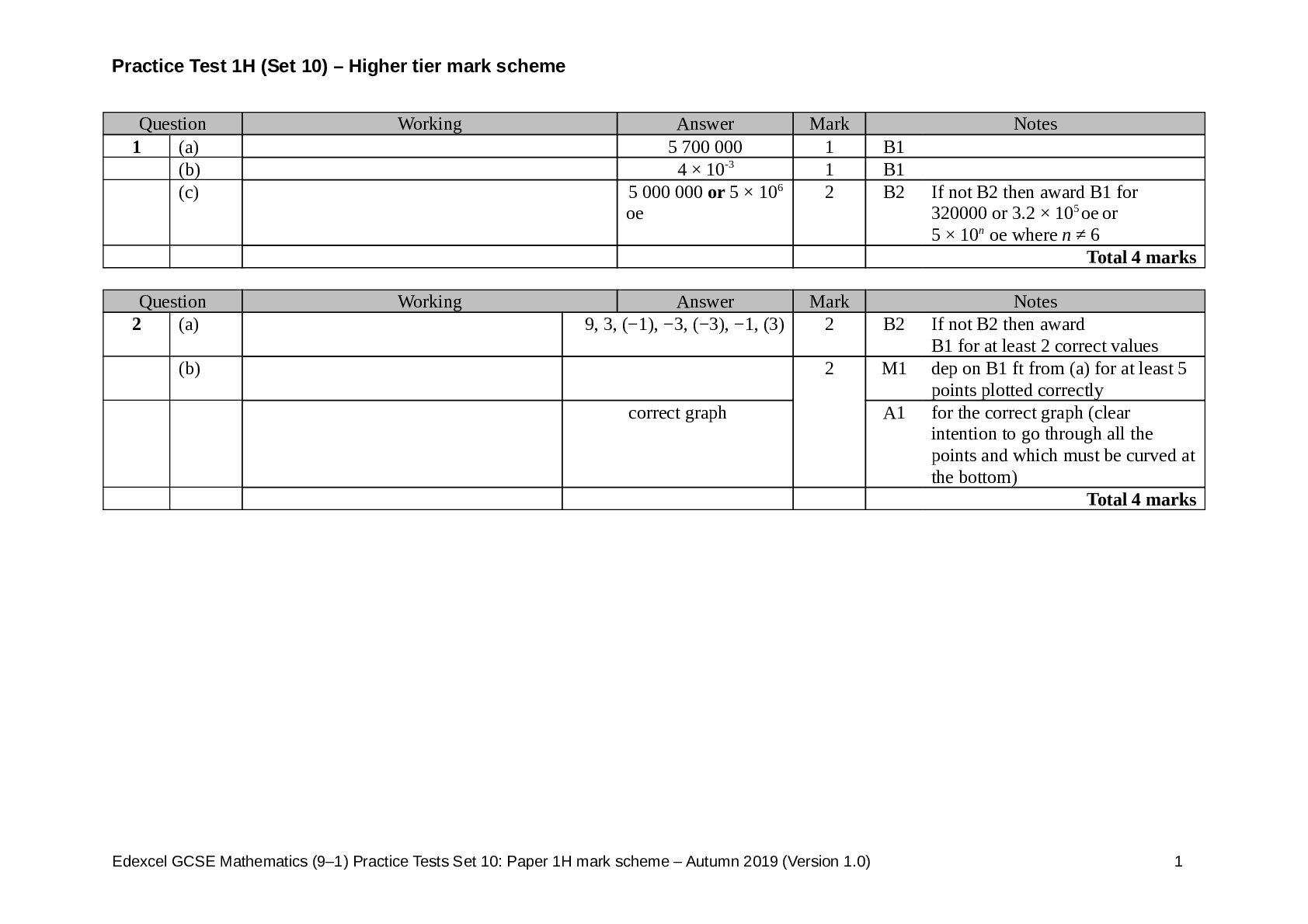
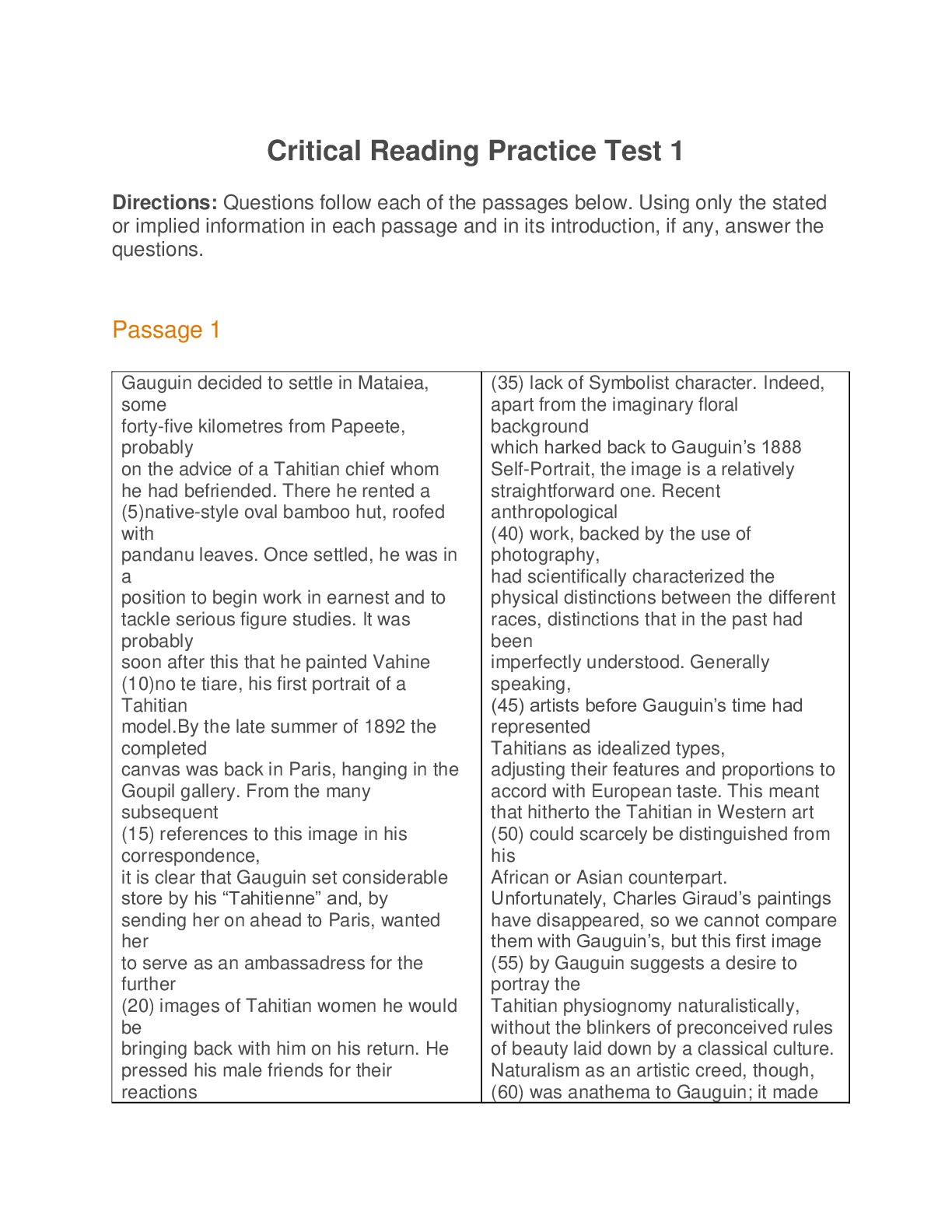
.png)
 Physiological Integrity Practice Test 1 (NCLEX-RN) – for Registered Nurses.png)
.png)
